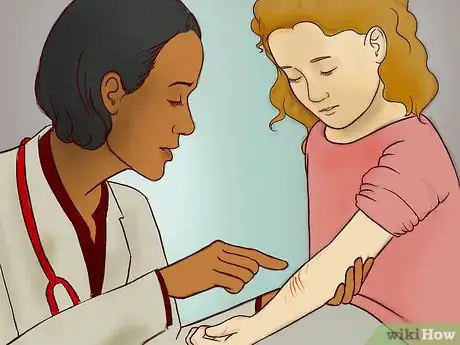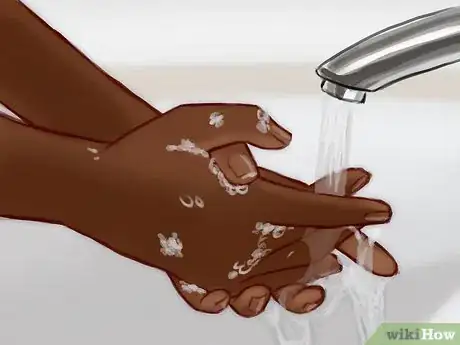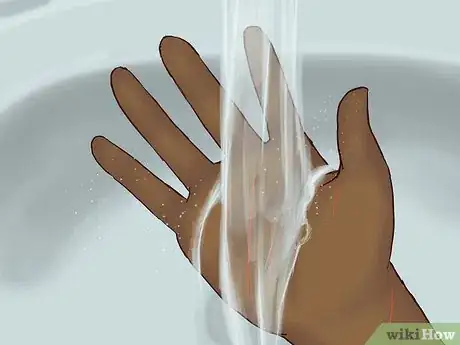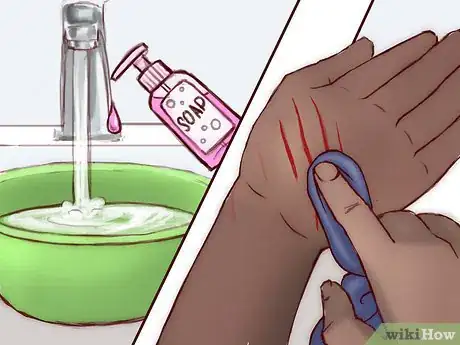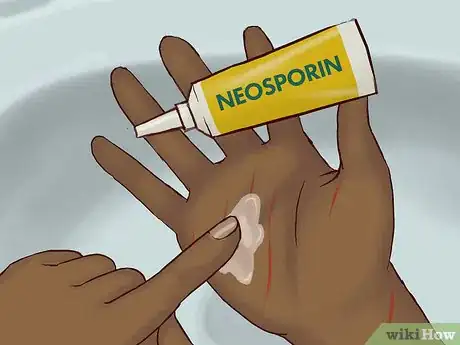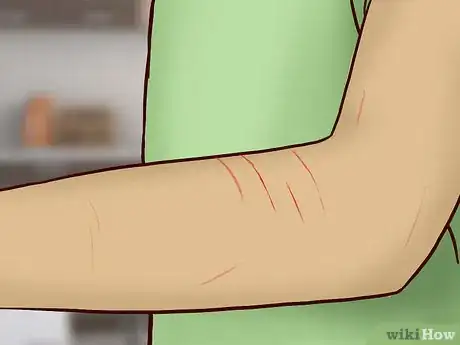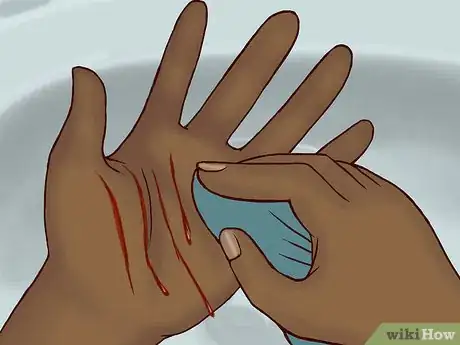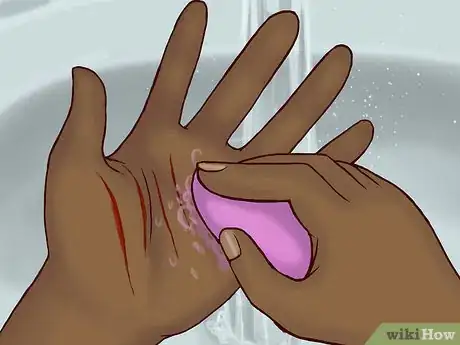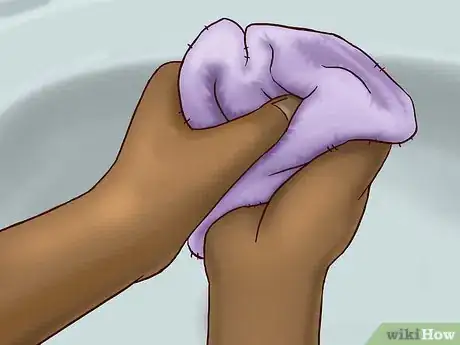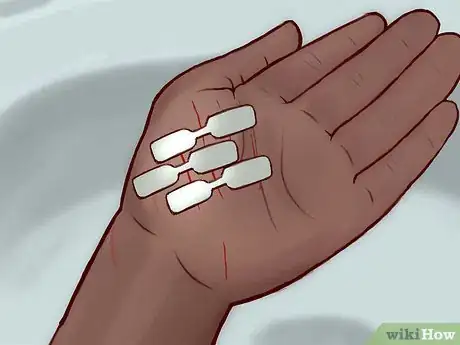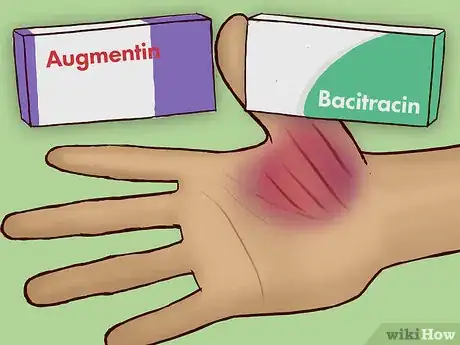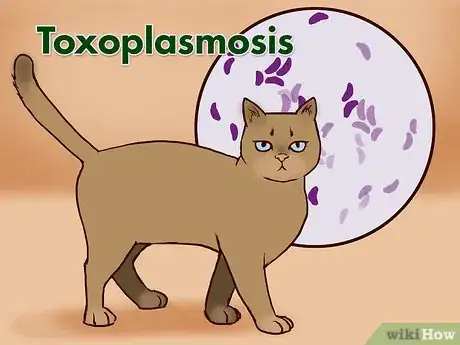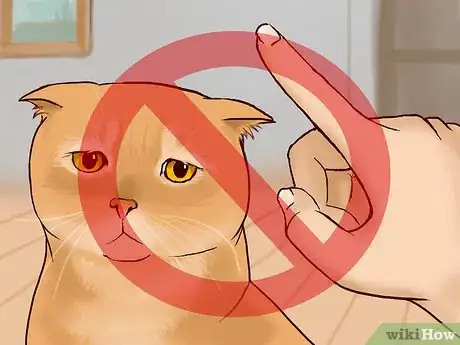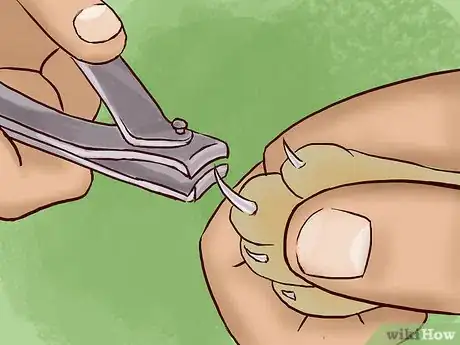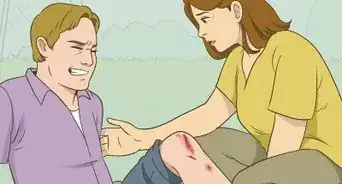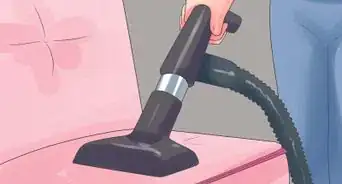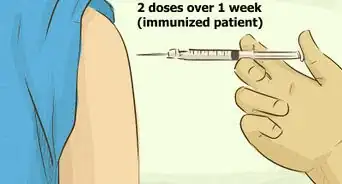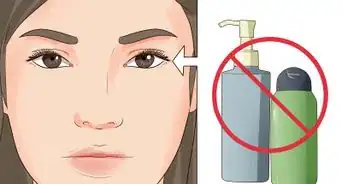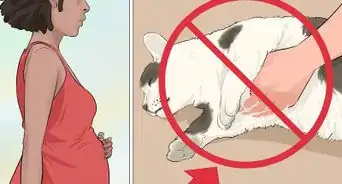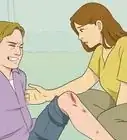This article was co-authored by Chris M. Matsko, MD. Dr. Chris M. Matsko is a retired physician based in Pittsburgh, Pennsylvania. With over 25 years of medical research experience, Dr. Matsko was awarded the Pittsburgh Cornell University Leadership Award for Excellence. He holds a BS in Nutritional Science from Cornell University and an MD from the Temple University School of Medicine in 2007. Dr. Matsko earned a Research Writing Certification from the American Medical Writers Association (AMWA) in 2016 and a Medical Writing & Editing Certification from the University of Chicago in 2017.
There are 11 references cited in this article, which can be found at the bottom of the page.
wikiHow marks an article as reader-approved once it receives enough positive feedback. This article received 24 testimonials and 91% of readers who voted found it helpful, earning it our reader-approved status.
This article has been viewed 684,306 times.
Cats can be playful, quirky, or occasionally aggressive. If you spend time around cats, it’s quite possible that you will suffer from a cat scratch at some point. Cats have sharp claws that they use to defend themselves, and sometimes they can deliver a pretty deep scratch. Caring for your cat scratch appropriately can help you avoid complications from an injury.
Steps
Evaluating the Cat Scratch
-
1Identify the cat. It is important to have some information about the cat that has scratched you. If he is your cat or the cat of a family member or close friend, you can consider him a “household cat.” You can likely treat the wound on your own if it is not too severe and you know the following information about the cat to be true:[1]
- The cat is fully vaccinated.
- The cat is in generally good health.
- The cat spends most of its time indoors.
-
2Seek medical treatment for scratches from an unknown cat. Unknown cats may not have vaccines, so you may need to have preventative treatment for bacterial infections, tetanus, or rabies. Particularly if the scratch was accompanied by a bite (which has about an 80% chance of becoming infected), you will need to seek medical attention from a physician.Advertisement
-
3Assess the wound. The severity of the wound from the scratch will dictate the appropriate treatment. Any cat scratch can be painful, but the depth of the scratch will determine the severity of the wound.
- A shallow wound that involves the uppermost layer of skin but involves minimal bleeding can be considered superficial.
- A deeper scratch injury that pierces several layers of skin and bleeds moderately should be considered serious.[2]
-
4Decide on an appropriate treatment. Superficial wounds from known household cats can be treated at home. However, any scratch from an unknown cat and serious (deep) scratches from household cats should be evaluated by a healthcare professional.
Treating a Superficial Scratch
-
1Wash your hands. Before working with the area that suffered a scratch, be sure that your hands are clean and disinfected. Wash your hands using soap and warm (or hot) water for at least 20 seconds. Be sure to clean between your fingers and under your fingernails. Then rinse your hands well with clean water.[3]
-
2Rinse the wound. Use clean running water from your faucet to rinse the cat scratch and the area around it.[4] Avoid overly hot water, which may worsen any bleeding that is present.
-
3Wash the scratched area. Carefully wash the area of the scratch with a gentle soap. Try to wash areas near the wound as well as the scratch itself (for example, if the scratch is on your forearm, it may be helpful to wash your entire forearm, not the scratch alone.) After washing, rinse completely with clean water from the faucet.[5]
- Do not scrub the wounded area during washing, as this could add further injury (bruising) to the injured tissues.
-
4
-
5Leave the scratch uncovered. The scratch wound should be fairly superficial if you are treating it at home, so there should be no need to bandage the area. Keep the scratch clean while it heals, but allow it to be exposed to fresh air.
Treating a Deep Scratch
-
1Seek medical treatment. Deeper wounds can involve profuse bleeding and may necessitate the use of oral antibiotics to prevent infection, even from a fully vaccinated cat.[10] You will typically be prescribed Augment 875/125 mg, to be taken twice daily for 7 to 10 days.
- Before seeking treatment from a medical professional, you may want begin treatment at home.
- Be sure to go to the doctor after taking the following steps to treat the wound.
-
2Stop the bleeding. If the wound is bleeding heavily, apply pressure to the area with a clean towel. Press the towel firmly to the bleeding area and hold in place until the bleeding subsides. You may also need to elevate the wound above your head.[11]
-
3Wash the scratch area. After washing your hands thoroughly, gently wash the wounded area with soap and rinse with clean water.[12] Do not scrub while you are washing, as this may restart the bleeding.
-
4Dry the wound. Use a second clean towel to completely dry the wound and the area around the scratch.
-
5Cover the scratch wound. Deep wounds should be covered (or closed) using an adhesive bandage (a Band-Aid), a butterfly bandage, or clean gauze dressings.[13]
- If the wound is wide, bring the edges of the wound together so that there is no gap between them and apply a butterfly bandage, which should pinch the cut together. Apply several butterfly bandages as necessary to close the edges of the wound together, which will facilitate proper and quick healing.
- If you do not have adhesive bandages, you can cover the area with gauze dressing, keeping it in place with medical tape.
Evaluating Cat Scratch Risks
-
1Avoid infection. Some scratch wounds and most bite wounds from cats can become infected. Cleaning the wound well and applying an antibiotic ointment such as Neosporin or Bacitracin can greatly reduce risk of infection. An infected wound may require oral antibiotics as well. Signs of an infected wound include:[14]
- Increased pain, swelling, redness, or warmth around the wound
- Presence of red streaks extending from the wound
- Drainage of pus from the wound
- Presence of a high fever
-
2Watch out for cat scratch disease. Cat scratch disease, the commonest disease spread by cats, is caused by the bacteria Bartonella henselae. Cats act as a reservoir for the disease, and it's especially prevalent among young cats and cats with fleas. About 40% of cats carry the bacteria at some point in their lives, but will show no sign of carrying the disease.[15]
- Some cats who have cat scratch disease can develop heart disease, ulceration in their mouths, or eye infections. [16]
- The first sign of cat scratch disease in humans is usually a small swelling at the region of the cat scratch or bite, followed by enlarged lymph glands in the armpits, groin, or neck. Next is a fever, fatigue, red eye, joint pain, and sore throat. [17]
- Untreated cat scratch disease in humans can cause severe eye, brain, liver, or spleen damage. [18]
- Immuno-compromised people are at higher risk of experiencing complications or even death from cat scratch fever.
- The diagnosis of cat scratch disease is usually by B henselae serology but can be diagnosed by culture, histopathology, or polymerase chain reaction. It is treated with antibiotics such as azithromycin, rifampin, gentamicin, ciprofloxacin, clarithromycin or bactrim.[19]
-
3Determine whether you have ringworm. Ringworm is a fungal infection characterized by round, puffy, and scaly patches of skin.[20]
- Ringworm is often accompanied by a severe itch.
- Ringworm can be treated with antifungal ointments such as miconazole or clotrimazole.
-
4Assess your risk for toxoplasmosis. Toxoplasmosis is a parasite that cats carry and pass through their feces. It is possible to catch the toxoplasmosis parasite, Toxoplasma gondii, through a cat scratch, particularly if traces of feces were present on the cat’s claws.[21]
- Infected humans can experience fever, body aches, and enlarged lymph nodes. Severe cases can cause damage to the brain, eyes, or lungs, and an infection can be particularly dangerous for pregnant women. Therefore, pregnant women should avoid tending to the litter box or cat feces during pregnancy.
- Treatment for toxoplasmosis involves taking an antiparasitic drug such as pyrimethamine.[22]
-
5Look for symptoms of other diseases. Cats can carry life-threatening diseases. Contact your physician immediately if you have received any cat scratch and develop any of the following symptoms:
- Fever
- Swelling of the head or neck
- Red, itchy, or scaly patches of skin
- Severe headaches, lightheadedness, or dizziness
Preventing Cat Scratches
-
1Do not punish a cat for scratching you. A cat’s scratching is a normal defensive behavior, and punishing a cat for scratching can lead to further aggression in the future.
-
2Clip your cat’s claws. You can trim a cat’s claws at home with regular nail clippers. Clipping a cat’s claws once a week can minimize damage from future scratches.[23]
-
3Avoid rough play. Try not to play roughly or aggressively with your cat or kitten. This may encourage them to bite and scratch you and other humans.
-
4Adopt an older cat. Most cats outgrow excessive biting and scratching once they pass from a juvenile to an adult cat, between 1 and 2 years of age. If you are sensitive to cat scratches or are immuno-compromised, you should consider adopting an older cat as a pet instead of a kitten.[24]
Warnings
- Always seek medical attention for a cat scratch if the cat was unknown, the wound was deep, or you are immuno-compromised.⧼thumbs_response⧽
- Avoid handling wild or stray cats if at all possible.⧼thumbs_response⧽
References
- ↑ http://www.urmc.rochester.edu/encyclopedia/content.aspx?ContentTypeID=90&ContentID=P01897
- ↑ http://www.urmc.rochester.edu/encyclopedia/content.aspx?ContentTypeID=90&ContentID=P01897
- ↑ http://www.cdc.gov/features/handwashing/
- ↑ http://www.mayoclinic.org/first-aid/first-aid-cuts/basics/art-20056711
- ↑ http://www.mayoclinic.org/first-aid/first-aid-cuts/basics/art-20056711
- ↑ http://www.mayoclinic.org/first-aid/first-aid-cuts/basics/art-20056711
- ↑ Diehr S, Hamp A, Jamieson B. Do topical antibiotics improve wound healing? Journal of Family Practice, 56(2);2007:140. http://hdl.handle.net/10355/3613
- ↑ http://reference.medscape.com/drug/neosporin-original-ointment-triple-antibiotic-ointment-neomycin-polymyxin-b-bacitracin-topical-343475
- ↑ Dire DJ. Cat bite wounds: risk factors for infection. Annals of Emergency Medicine, 20(9);1991:973-979.
- ↑ http://www.urmc.rochester.edu/encyclopedia/content.aspx?ContentTypeID=90&ContentID=P01897
- ↑ http://www.mayoclinic.org/first-aid/first-aid-cuts/basics/art-20056711
- ↑ http://www.mayoclinic.org/first-aid/first-aid-cuts/basics/art-20056711
- ↑ http://www.mayoclinic.org/first-aid/first-aid-cuts/basics/art-20056711
- ↑ http://www.webmd.com/skin-problems-and-treatments/symptoms-of-infection-after-a-skin-injury
- ↑ http://www.cdc.gov/healthypets/diseases/cat-scratch.html
- ↑ http://www.cdc.gov/healthypets/diseases/cat-scratch.html
- ↑ http://www.cdc.gov/healthypets/diseases/cat-scratch.html
- ↑ http://www.cdc.gov/healthypets/diseases/cat-scratch.html
- ↑ http://www.cdc.gov/healthypets/diseases/cat-scratch.html
- ↑ http://www.nlm.nih.gov/medlineplus/ency/article/001439.htm
- ↑ http://www.nlm.nih.gov/medlineplus/toxoplasmosis.html
- ↑ http://www.nlm.nih.gov/medlineplus/toxoplasmosis.html
- ↑ http://www.paws.org/index.php/library/cats/behavior/destructive-scratching/
- ↑ http://www.cdc.gov/healthypets/diseases/cat-scratch.html
About This Article
If you were scratched by an unknown cat, seek medical attention promptly, since the cat might not have been vaccinated. You should also seek medical attention if the scratch pierced several layers of skin and is bleeding moderately. However, if you're dealing with a shallow scratch from a household cat, you can treat it at home. First, rinse the wound and gently wash the area with mild soap. Then, apply an antibiotic ointment to the scratch, and leave it uncovered while it heals. For more advice from our Medical co-author, like how to recognize complications caused by a cat scratch, scroll down!



